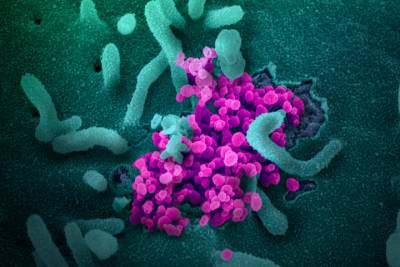What to Know to Hunt for Viruses
All living things propagate through sets of instructions encoded in deoxyribonucleic acids (DNA). Scientists have started to look for this DNA in the environment—environmental DNA or eDNA—as a way to study what’s around. Read on to learn more about what scientists look for on the hunt for viruses and other microbes in environmental samples.
What do you know?

Nucleic acid sequences are the recipes that build and maintain all living things over time. Sometimes scientists look for these sequences as hints at the types of living things in a particular environment and what they’re up to:
What’s cooking?
Environmental nucleic acids
Organisms are constantly shedding nucleic acids: DNA and RNA. That’s because their cells are continually eating and creating waste, performing complex metabolic functions for their survival by switching DNA genes on and off, or eventually “turning over” which is what scientists say when they mean that cells have been growing, dividing, and dying. While only RNA can be made while a cell or organism is alive, DNA is much more stable and can persist for long after an organism has moved on from an environment. In an ecosystem, the collective DNA or RNA that can be measured contains an immense amount of information on what an ecosystem is up to and how healthy it is without focusing on any one organism. For this reason, we call this type of nucleic acid, environmental DNA (eDNA) or environmental RNA (eRNA).










